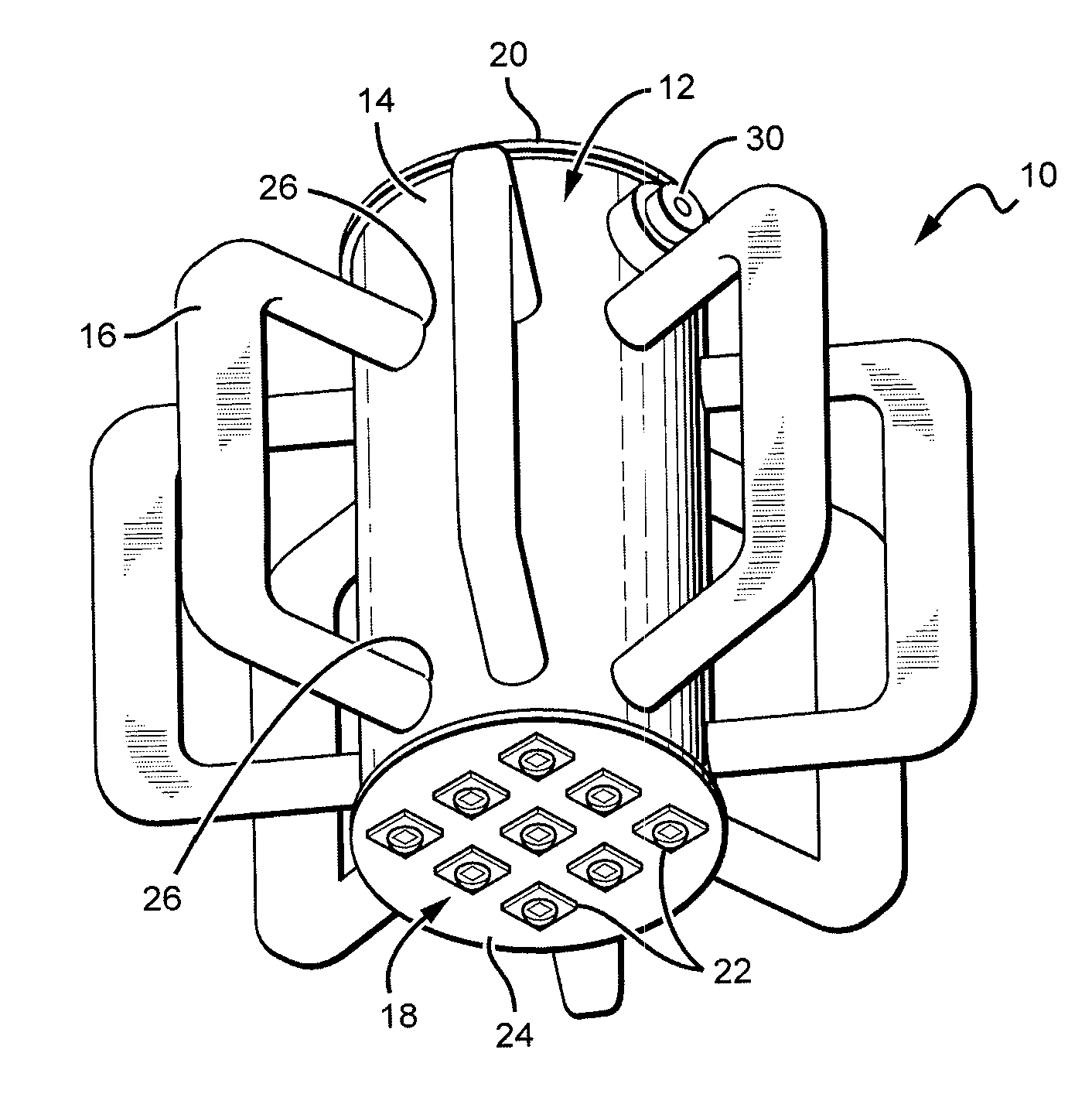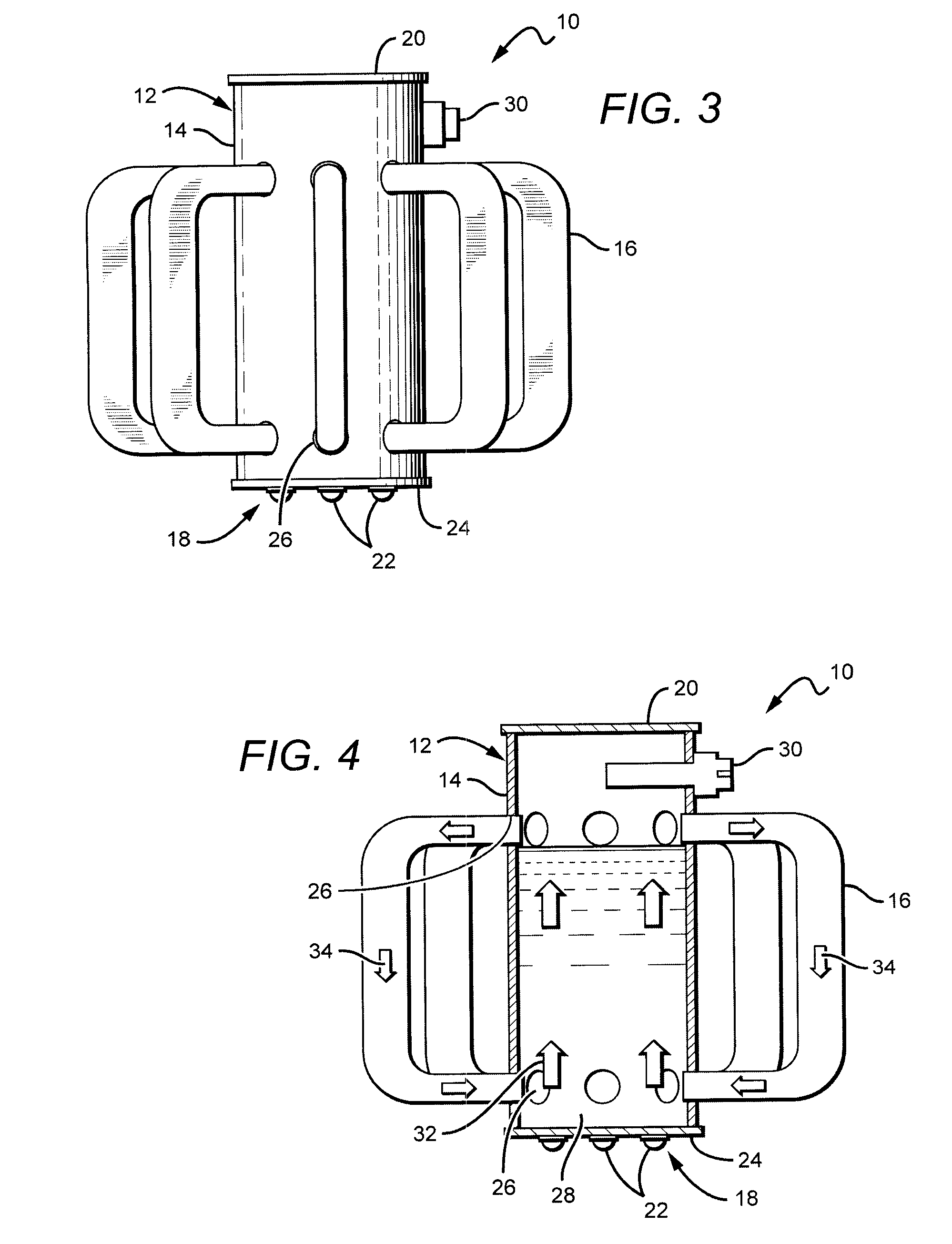Passive phase change radiators for LED lamps and fixtures
a technology of led lamps and radiators, applied in the field of lamps or lighting fixtures, can solve the problems of incandescent lights being very energy-inefficient light sources, inability to generate white light from active layers, and still relatively inefficien
- Summary
- Abstract
- Description
- Claims
- Application Information
AI Technical Summary
Benefits of technology
Problems solved by technology
Method used
Image
Examples
Embodiment Construction
[0026]The present invention provides heat management devices and structures that can be used in lamps and fixtures (“lamps”) having solid state light sources, such as one or more LEDs. Some lamp embodiments according to the present invention comprise one or more phase change radiators that utilize the latent heat of fluids to circulate and draw heat away from the LEDs and radiate the heat into the ambient, allowing for the LEDs to operate at a lower temperature. Latent heat is the heat energy required to change a fluid's liquid state to a gas state, and during this phase change state, the temperature does not change. Some phase change radiators according to the present invention can comprise a main radiator body and multiple radiator coolant loops mounted to the body. The present invention relies on the circulation of the “hot” fluid and gas utilizing the pressure differential between the two states. The process converts the LED heat loss energy to the fluid latent heat energy and f...
PUM
 Login to View More
Login to View More Abstract
Description
Claims
Application Information
 Login to View More
Login to View More - R&D
- Intellectual Property
- Life Sciences
- Materials
- Tech Scout
- Unparalleled Data Quality
- Higher Quality Content
- 60% Fewer Hallucinations
Browse by: Latest US Patents, China's latest patents, Technical Efficacy Thesaurus, Application Domain, Technology Topic, Popular Technical Reports.
© 2025 PatSnap. All rights reserved.Legal|Privacy policy|Modern Slavery Act Transparency Statement|Sitemap|About US| Contact US: help@patsnap.com



